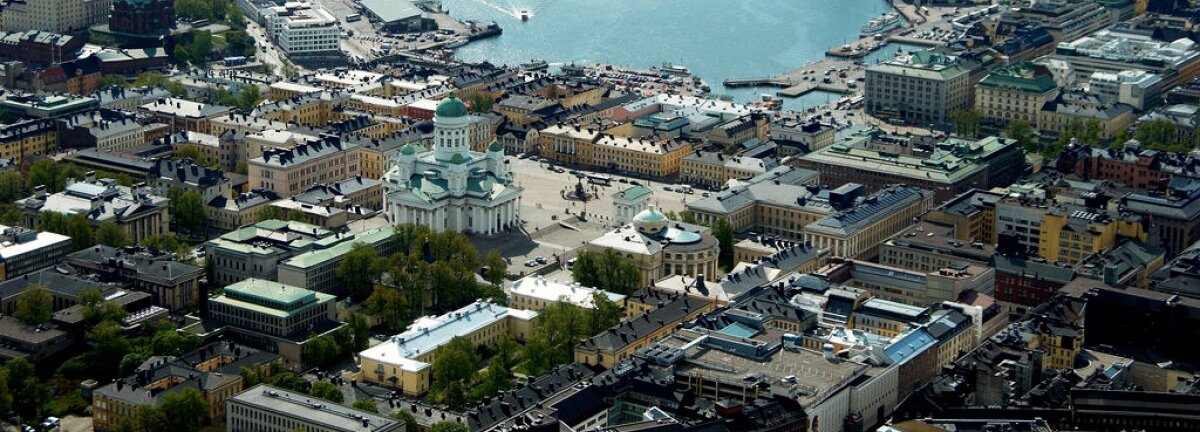Dispatches from Dundee: Climbing the City Design Ladder

In the second blog reflecting on the Dundee Design Festival, Stephen Miller reports on how design is being used by cities around the world, reflecting on what the strategic use of design means for cities in the UK.
Where and how we live is undergoing rapid transformation. For the first time ever, more than half the world’s population live in urban areas (54%), and this is expected to increase to 66% by 2050. A greater concentration of population comes with challenges – such as increased pressure on infrastructure and public services – but also yields a range of benefits, particularly in terms of boosting local economies and the cultural life of a city.
Increasingly, UK cities are looking at how their services and investments can deliver cross-sector benefits.
At Design Council Cabe, we see these changes playing out in a range of ways in the UK. Devolution and the growth of Combined Authorities are two recent policy developments intended to enable cities to better manage their growing populations.
With these changes we are seeing how local authorities are re-evaluating their existing remit, capacity and skills, and in turn recalibrating service delivery models to ensure they are better able to meet changing and growing needs amongst their constituents. Increasingly, UK cities are looking at how their services and investments can deliver cross-sector benefits (i.e. health, social, economic, cultural), with recent developments in Manchester a good example of this.
It was therefore really interesting to hear from a number of UNESCO Cities of Design whilst in Dundee about how they are strategically using design at a city level. Representatives from Austria, China, Finland, and France all spoke at length about the different ways in which their cities were embracing design.
Boosting the local economy through design
Unsurprisingly, much of the rationale for cities embracing design is economic, with perhaps the best example of this found in Shenzhen, China. Since being founded in the 1980’s, the city’s population has exploded from 30,000 to over 10m today. Some of the first businesses in the city were printing companies relocating from nearby Hong Kong, who in turn attracted graphic designers to the city to work on the publications they were producing. Since then the city has become well known for assembling Apple products like iPhones and iPads, though has also developed a strong presence in both architecture and fashion, and recognises design as the dominant theme within its short history.
At a national level, the Chinese government also has an ambition to climb the value chain and add ‘Designed in China’ alongside the more familiar monikers of ‘made’ or ‘assembled in’. Shenzhen is capitalising on this interest, and in addition to running a joint design biennial with Hong Kong, will be hosting their first ever design week this year.
Using strategic design at city level
But perhaps the best example of a city using design strategically was found slightly closer to home, in Helsinki, Finland. With a population of just under 1m, Helsinki is operating at a different scale to the previous example, although this shouldn’t detract from the size of its ambitions.
For a start, the city is undergoing one of the biggest transformations in its history, with a number of major redevelopments happening, including that of the former industrial area of Kalasatama to create a new neighbourhood for 20,000 people. The use of design and design thinking are central to these plans, and the agency overseeing the redevelopment has the noble ambition of providing every resident with an additional hour a day “by improving the flow of traffic and logistics, as well as guaranteeing first-rate local services and flexible facilities for remote working”.
Helsinki is also in the process of recruiting a Chief Design Officer, and with design embedded into most departments the new incumbent will hopefully be pushing at an open door in terms of further embedding design and design thinking in the city.
Design is not just confined to the built environment however, and it is slowly becoming embedded into departments across the City Council thanks to the work of Helsinki Lab. This is significant, as unlike in the UK the City Council of Helsinki incorporates a range of public services, including schools, health care and public transport, meaning design is being incorporated in various ways across the city.
Helsinki is also in the process of recruiting a Chief Design Officer, and with design embedded into most departments the new incumbent will hopefully be pushing at an open door in terms of further embedding design and design thinking in the city.
Interestingly, Helsinki has also developed its own ‘City Design Ladder’, to visualise the steps it needs to go through before it considers itself to be using design strategically. Like its Danish namesake, the City Design Ladder envisages a transition away from viewing design as predominantly a final form-giving stage undertaken by specialists, to design skills and thinking being embedded within the Council and forming an integral part of strategic planning.
This experience is especially pertinent for us in the UK given the rapid growth in urban populations and ongoing need for innovation within public services. At Design Council Cabe we are increasingly seeing how many local authorities are dealing with pressures to plan for and deliver a scale of redevelopment beyond their previous experience and expertise.
This requires more strategic insight and information, which then has to be interpreted into local delivery that is sustainable, supportable and resilient. It is one of the reasons we have developed a comprehensive design service for cities that brings together local knowledge and world-class expertise to help deliver high-quality, prosperous places. We look forward to monitoring the fortunes of the UNESCO Cities of Design, and learning from them as they climb the ladder.
Subscribe to our newsletter
Want to keep up with the latest from the Design Council?
